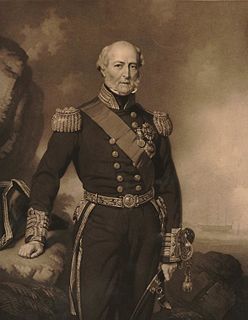| Office of the Controller of the Navy (CofN) | |
|---|---|
 Ensign of the Royal Navy | |
| Department of the Admiralty, Ministry of Defence | |
| Member of | Board of Admiralty, Admiralty Board, Navy Board |
| Reports to | First Sea Lord |
| Nominator | First Lord of the Admiralty, Secretary of State for Defence |
| Appointer | Prime Minister Subject to formal approval by the Queen-in-Council |
| Term length | Not fixed (typically 1–3 years) |
| Inaugural holder | Rear Admiral Sir Samuel Pechell |
| Formation | 1832-current |
The post of Third Sea Lord and Controller of the Navy originally known as Third Naval Lord was formerly the Naval Lord and member of the Board of Admiralty responsible for procurement and matériel in the British Royal Navy. The title of the office is now known as Controller of the Navy (abbreviated as CofN), and the Controller of the Navy is a member of the Admiralty Board.

The Board of Admiralty was established in 1628 when Charles I put the office of Lord High Admiral into commission. As that position was not always occupied, the purpose was to enable management of the day-to-day operational requirements of the Royal Navy; at that point administrative control of the navy was still the responsibility of the Navy Board, established in 1546. This system remained in place until 1832, when the Board of Admiralty became the sole authority charged with both administrative and operational control of the navy when the Navy Board was abolished. The term Admiralty has become synonymous with the command and control of the Royal Navy, partly personified in the Board of Admiralty and in the Admiralty buildings in London from where operations were in large part directed. It existed until 1964 when the office of First Lord of the Admiralty was finally abolished and the functions of the Lords Commissioners were transferred to the new Admiralty Board and the tri-service Defence Council of the United Kingdom.
Procurement is the process of finding and agreeing to terms, and acquiring goods, services, or works from an external source, often via a tendering or competitive bidding process. Procurement is used to ensure the buyer receives goods, services, or works at the best possible price when aspects such as quality, quantity, time, and location are compared. Corporations and public bodies often define processes intended to promote fair and open competition for their business while minimizing risks such as exposure to fraud and collusion.

The United Kingdom, officially the United Kingdom of Great Britain and Northern Ireland but more commonly known as the UK or Britain, is a sovereign country lying off the north-western coast of the European mainland. The United Kingdom includes the island of Great Britain, the north-eastern part of the island of Ireland and many smaller islands. Northern Ireland is the only part of the United Kingdom that shares a land border with another sovereign state—the Republic of Ireland. Apart from this land border, the United Kingdom is surrounded by the Atlantic Ocean, with the North Sea to the east, the English Channel to the south and the Celtic Sea to the south-west, giving it the 12th-longest coastline in the world. The Irish Sea lies between Great Britain and Ireland. With an area of 242,500 square kilometres (93,600 sq mi), the United Kingdom is the 78th-largest sovereign state in the world. It is also the 22nd-most populous country, with an estimated 66.0 million inhabitants in 2017.
Contents
- History
- List of office holders
- Third Naval Lords 1832–1868
- Third Naval Lords and Controllers of the Navy 1869–1872
- Controllers of the Navy 1872–1882
- Third Naval Lords and Controllers of the Navy 1882–1904
- Third Sea Lord and Controllers of the Navy 1904–1912
- Third Sea Lords 1912–1918
- Third Sea Lords and Controllers of the Navy 1918–1965
- Controllers of the Navy 1965–current
- Departments under the office
- Current
- Former
- Attribution
- See also
- References











